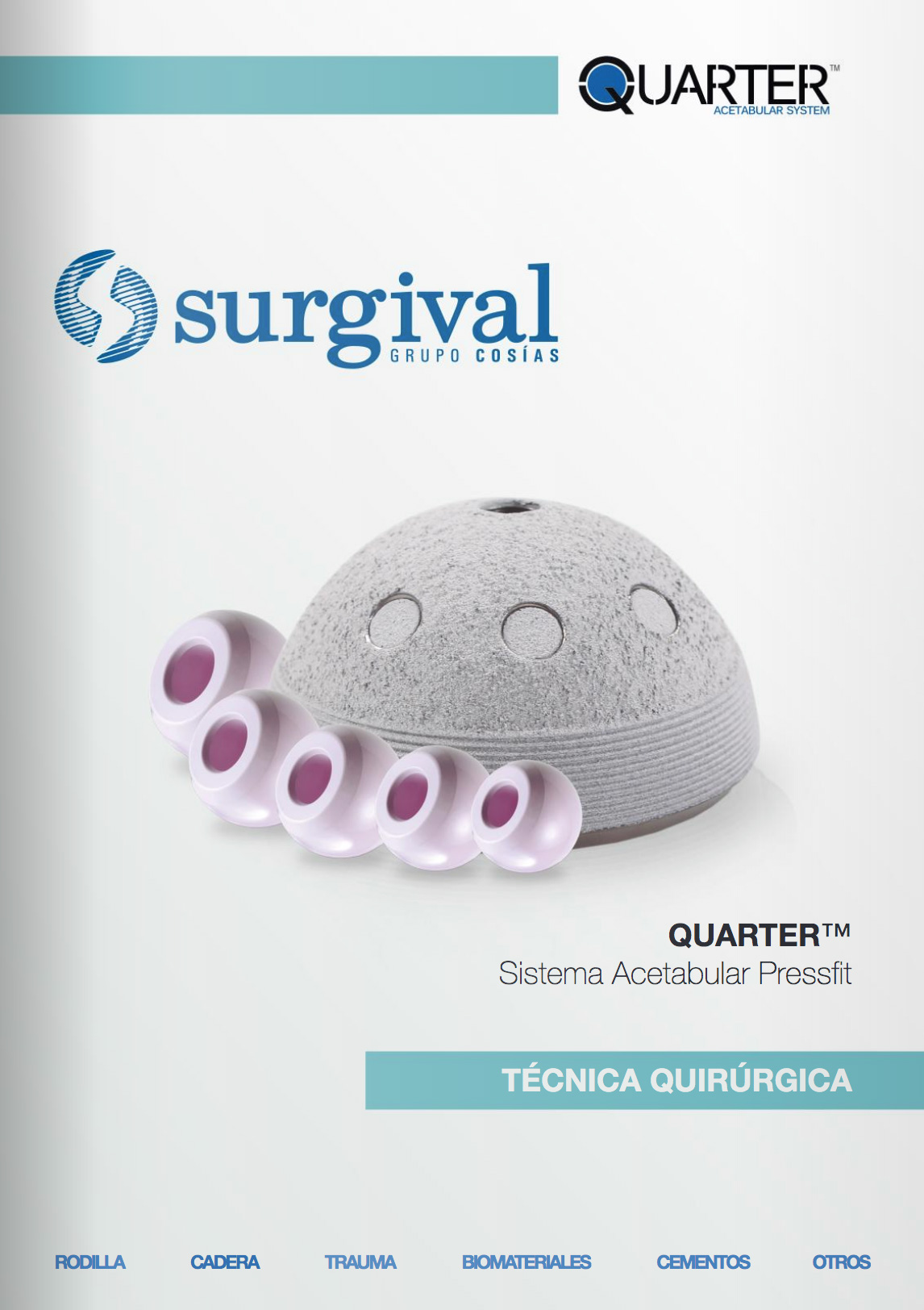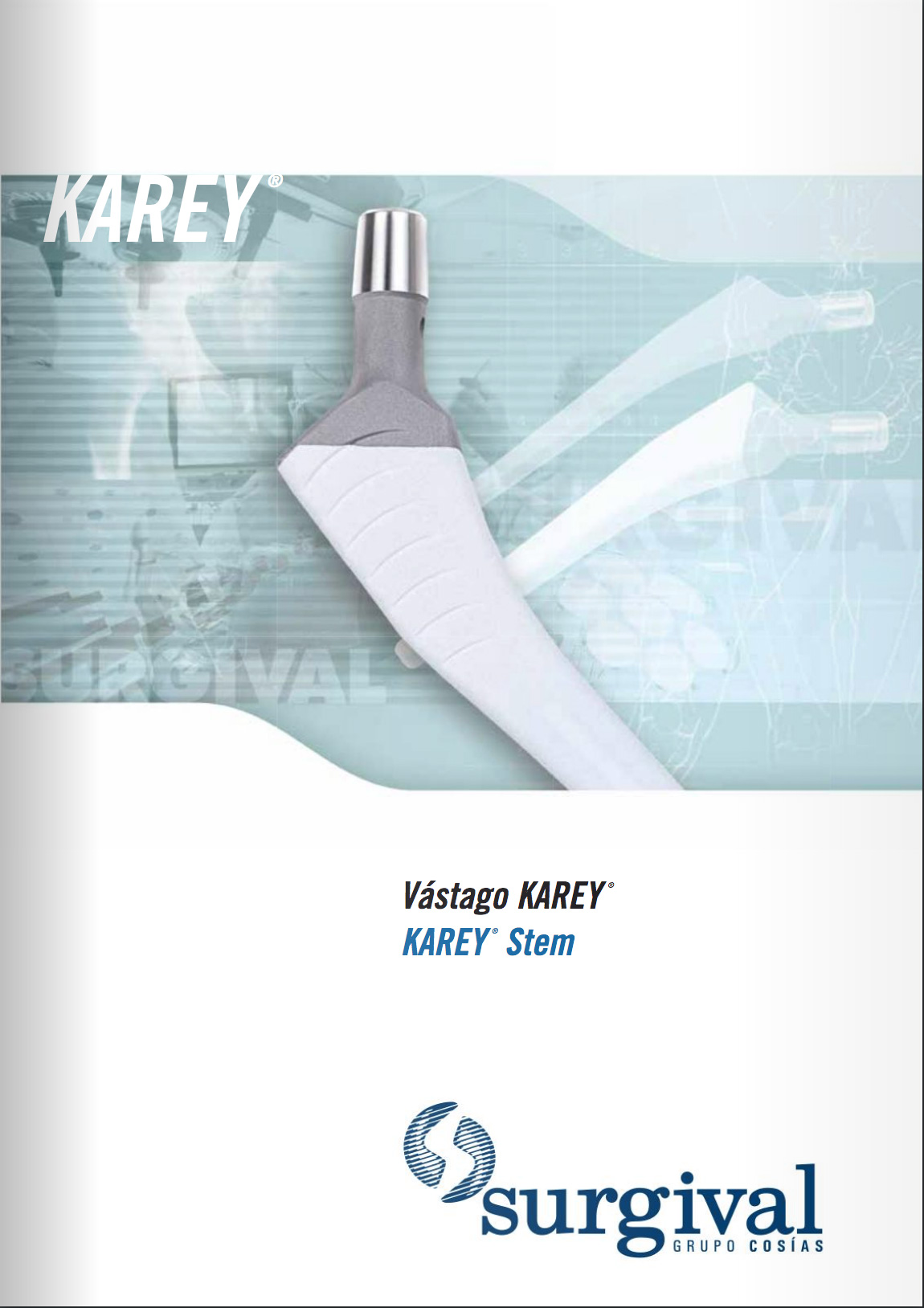Patient info: Hip
If you suffer from hip issues, at some point your surgeon may consider the option of a total or partial hip replacement. Here you will find useful information about the hip’s anatomy, how it works, what the surgery involves and what kinds of prosthesis are out there.
We hope you find it useful!
What is the hip?
The hip is the second largest joint in the body (after the knee) and is particularly strong as it must support large loads and a wide range of movements. In addition, it plays a fundamental role in maintaining balance and is the foundation for the body’s centre of gravity.
- The hip joint is made up of two bones: the upper portion of the femur, or the femoral head, and a spherical cavity in the pelvis called the acetabulum.
- Both the femoral head and the acetabulum are covered in a flexible tissue called joint cartilage, which helps the joint move smoothly.
- The hip joint is surrounded by ligaments, a fibrous tissue that holds the joint in place and connects the hip bones to the thigh.
- Lastly, the joint capsule hermetically protects the joint and contains synovial fluid, which acts as a lubricant to reduce friction and wear on the joint.
A healthy hip allows us to walk, bend over and turn around without any pain. However, whether due to ageing, overuse of the joint or a traumatic injury, the hip can experience illness or injury that prevent it from working normally or cause chronic pain and stiffness.
Osteoarthritis is the most common cause of hip replacement. However, there are other conditions such as hip dysplasia, arthritis, dislocation or fractures of the femoral head or neck that require surgery when other conventional therapies do not work.
What is a hip replacement?
A hip replacement or arthroplasty is one of the most common procedures for successfully relieving pain and restoring mobility in patients with advanced hip osteoarthritis.
In broad terms, this surgery involves removing the damaged part of the joint (femoral head and acetabulum) and replacing it with one or multiple components to restore natural hip function and movement.
The following video offers a short, simple explanation of what a total hip replacement involves:
In general, there are two types of hip arthroplasty: the partial hip replacement which the damaged part of the femur is replaced but the pelvis acetabulum is left intact, and the the total hip replacement in which, in addition, a cup is implanted into the pelvis where the femoral head sits. If surgery is performed to replace a previous prosthesis, this is called a revision replacement, which can be either total or partial.
Choosing one procedure or the other depends on multiple factors such as the patient’s condition, bone quality or age, and it is decided at the discretion of the surgeon.
The components of a total hip prosthesis are...
- The femoral stem which is inserted into the femur to secure the joint. It is always made of metal (titanium, stainless steel or alloys) to ensure proper load support.
- The femoral head, made of metal or ceramic, which replaces the anatomical head of the femur.
- The acetabular component or cup: This is a cup-shaped metal component that is fixed to the acetabulum in the pelvis.
- The insert or liner that goes inside the cup This intermediate piece between the cup and the femoral head is what prevents friction between the two and allows the hip to move freely. It is typically made of high density polyethylene (plastic) or ceramic.
You can find out about other types of hip prostheses and implants here.
According to the type of prosthesis, the surgeon may also choose between cemented fixation (the prosthesis is fixed to the bone with special bone cement) or cementless fixation (the prosthesis has a special biological coating that promotes bone growth and fixation).
Total Hip System
QUARTER™ & KAREY®
The Surgival primary Total Hip System is currently comprised of two product lines: the QUARTER Acetabular System and the KAREY stem line.
These systems are based on an innovate design that offers specialists an array of options for restoring patients’ anatomies and guaranteeing a wide range of movement.
Characteristics of the Surgival Hip System:
Multiple options between components
The combination of different cup, insert and femoral head sizes in the QUARTER Acetabular System offers a total of 77 different configurations. This versatility, together with the KAREY range of stems with different sizes for both cemented and cementless versions, enables optimal adaptation to each patient’s unique anatomy.
High-quality biocompatible materials
Materials: KAREY C Stem in High Nitrogen Stainless Steel, KAREY HA Stem and QUARTER Cup in Titanium Alloy with Hydroxyapatite coating, QUARTER Insert in Ultra High Molecular Weight Polyethylene and Femoral Heads in Stainless Steel, Cobalt-Chrome and Ceramic.
Enhanced stability and advanced fixation
The peripheral grooves on the cup and the coating guarantee dual fixation while the triple wedge shape of the stem offers enhanced stability and prevents the prosthesis from sinking.
FAQs
HIP INFORMATION RESOURCES
Want more information? You can find here additional documents with more detailed information about hip arthroplasty, pre- and post-operative recommendations and the Surgival Hip Systems.
Disclaimer
The information on this website is for educational purposes and under no circumstances does it replace the advice or consultation of a doctor or healthcare professional. Surgival assumes no responsibility regarding your decision to undergo joint replacement surgery based on the information provided here. We work hard to provide precise, pertinent and comprehensive information, but offer to guarantees in that respect. Always consult with your doctor or healthcare professional for advice, diagnoses or medical decisions. Each patient will experience a different level of post-operative activity based on their individual circumstances. Your doctor should advise you on the best way to maintain your activity level to help prolong the useful life of your prosthesis, which may vary for each individual.




